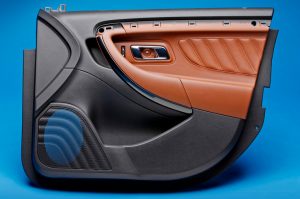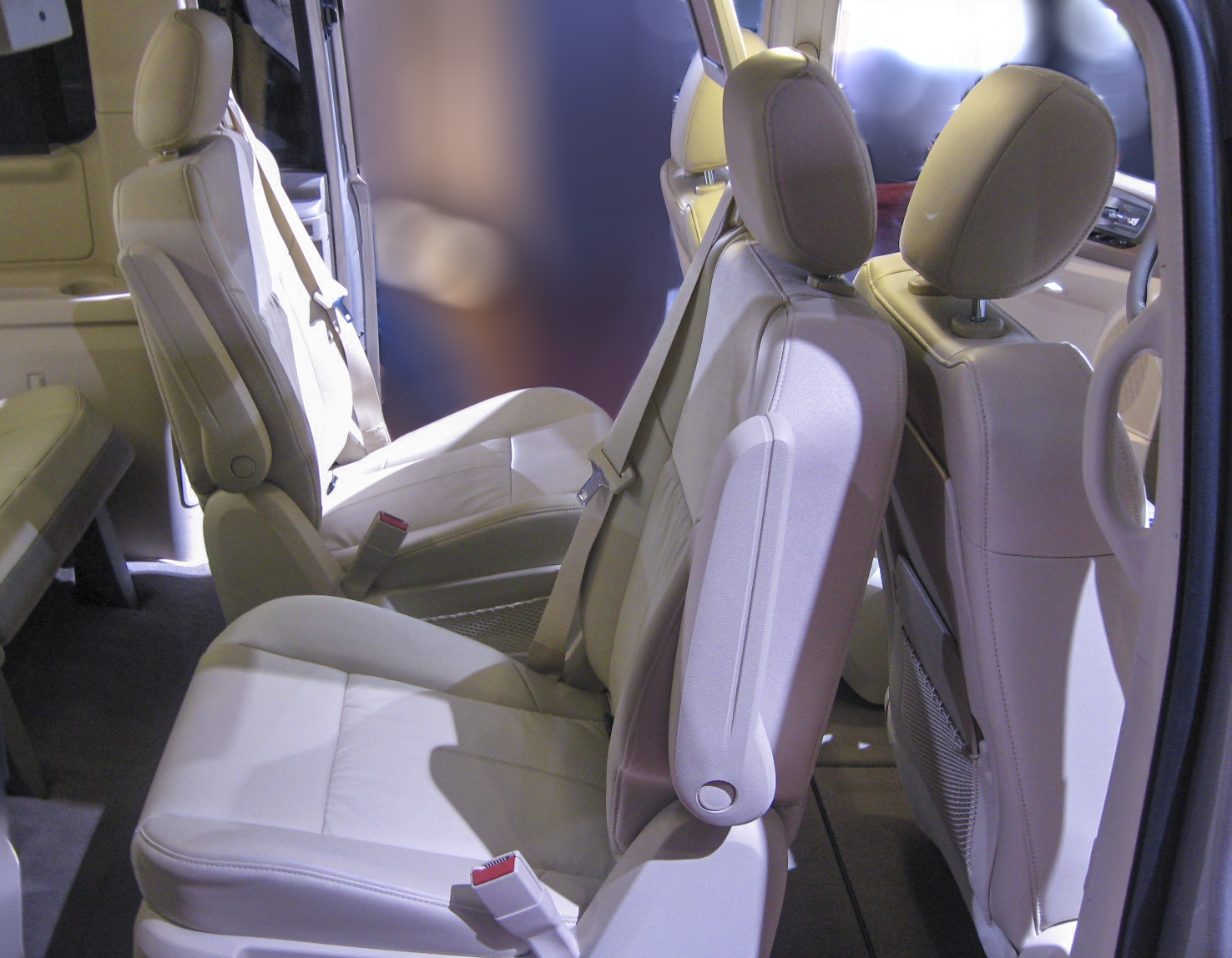Plastics represent only about 10% of the weight of today’s vehicle but about 50% of the volume. Many modern car interior parts are made with polymer, including lightweight seats, instrument panels, durable upholstery, sound control fabrics, the headliner, dash, and door panels.
Instrument Panels
 Thanks to modern plastics technology, instrument panels are often made of acrylonitrile-butadiene-styrene (ABS), ABS/polycarbonate alloys, polycarbonates, polypropylene, modified polyphenylene ether (PPE) and SMA (styrene-maleic anhydride) resins. These plastics allow for complex designs in items such as airbag housings, center stacks for instrument panels, and large, integrated instrument panel pieces.
Thanks to modern plastics technology, instrument panels are often made of acrylonitrile-butadiene-styrene (ABS), ABS/polycarbonate alloys, polycarbonates, polypropylene, modified polyphenylene ether (PPE) and SMA (styrene-maleic anhydride) resins. These plastics allow for complex designs in items such as airbag housings, center stacks for instrument panels, and large, integrated instrument panel pieces.
Wholly integrated single-piece units can be manufactured from all-urethane and all-polypropylene resins. This results in a seamless instrument panel with greatly reduced NVH levels, molded-in color and with significant cost savings for the manufacturer. Cost effective post-consumer and in-plant recycling are also achievable.
This 2017 Lincoln Continental instrument panel is claimed to be the thinnest full-size, deep-draw injection molded IP in North America at 1.9 mm/0.07 in. This design was 14% lighter and saved money in materials investment.
Interior Lighting

For safety and convenience, lighting in daylight and at night must be adjustable. Plastic LEDs and acrylic fiber optic light tubes help make controls and instrument panels more readable. Navigating is easier with overhead dome lighting and backlit buttons and knobs. Plastics’ use in safety door lighting helps alert oncoming cars of stopped roadside vehicles.


The 2015 Lincoln MKC patented interior lighting application takes advantage of the optical transparency of a specialty polymer and geometrically mirrored surfaces to move the light in an innovative and efficient manner upward from the bottom of the cup holder.
Door Panels & Consoles

Polymer materials are well suited for flexible, innovative and unique designs; resulting in stylish, comfortable, scratch-resistant durable interior components.
Plastic has revolutionized the design of car interiors, especially the doors and consoles. ABS, polypropylene and SMA plastics shape lightweight, durable and complicated shapes for consoles. Consoles include armrests, cup holders, and storage spaces. They would be difficult to reproduce as efficiently and with the same performance results using any other family of materials. Plastics help reduce noise, vibration, and harshness in the vehicle interior.

Cup holders are a focal point for customer critiques of vehicle interiors and they must accommodate a wide range of container sizes without tipping during normal driving conditions. According to industry awards, the 2017 Ford Super Duty Truck incorporates a living hinge making it adjustable to accommodate many containers while reducing 10 parts to 3. The vehicle also features a quad-barrel convertible cup holder, a design allowing the console to convert from two cup holders and a bin into a four cup holder console.

Plastics door modules can save time in production and assembly. The 2014 Chevrolet Corvette features innovative door trim technology reliant on plastics. Thanks to a thermoplastic polyolefin material specifically developed for this application, the result is a door-trim skin/foil that offers lower abrasion and less scratch & mar, resulting in reduced cost and weight
Upholstery & Fabrics

Design flexibility, corrosion resistance, and favorable mechanical properties make polymer composites a logical choice for upholstery and interior surfaces. Consumers demand surfaces with a high-quality look and feel.

Plastic car interior parts can provide similar aesthetics to natural materials with best-in-class scratch resistance for interior seats and surfaces. For example, many manufacturers are using artificial leather in automobiles owing to cost efficiency, aesthetic appeal, and other benefits.
The 2015 Ford F-150 features seat fabric made from a hybrid blend of 100% recycled materials, including post-industrial fiber and post-consumer water bottles. Use of the fabric provides significant environmental benefits, including diverting what’s reported as over 5-million water bottles from landfills each year.
Conventional seat construction can limit rear-seat legroom. The 2017 Chevrolet Bolt EV has an ultra-thin innovative design. The Bolt uses an all-plastic shell with a larger concave region for more occupant comfort. Chevrolet found that plastics technology reduced seatback thickness by 2 inches and mass by 6-8 pounds.
Stay Up to Date
Sign up to receive our newsletter and get the latest delivered to your inbox.
The Insider's View
Follow our blog for a unique look at how plastics are changing the way we make cars.
Read

